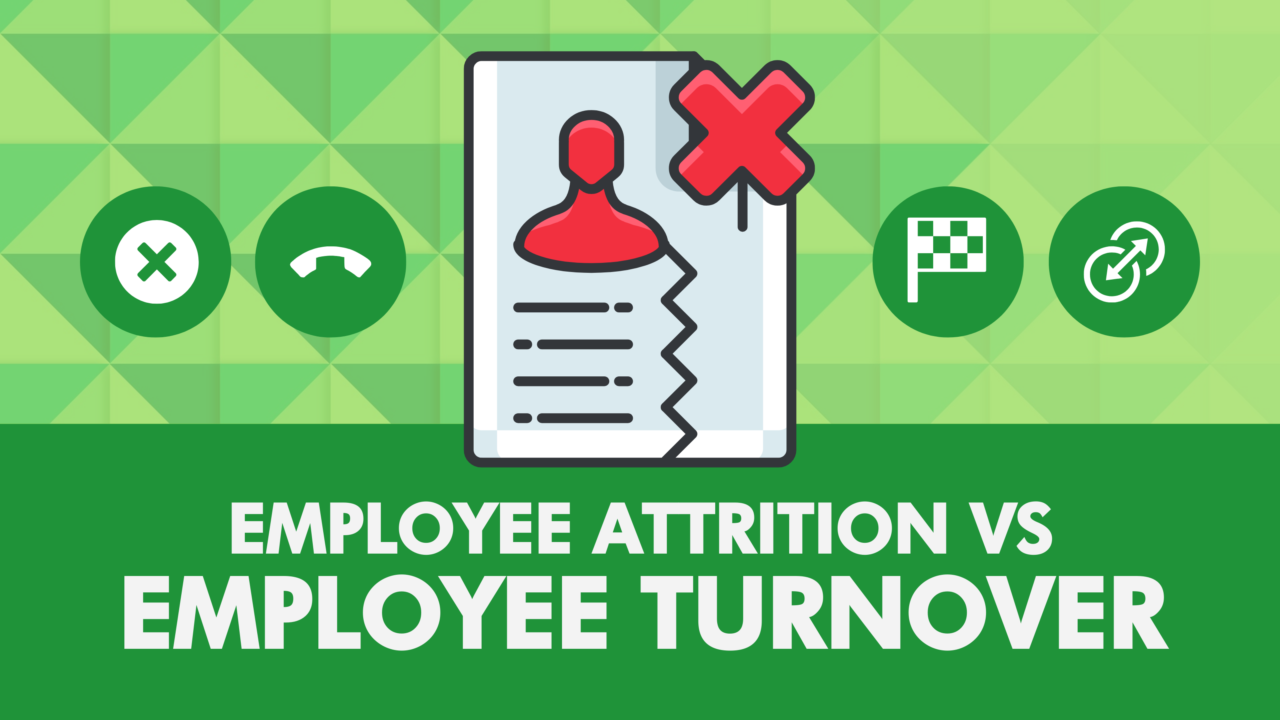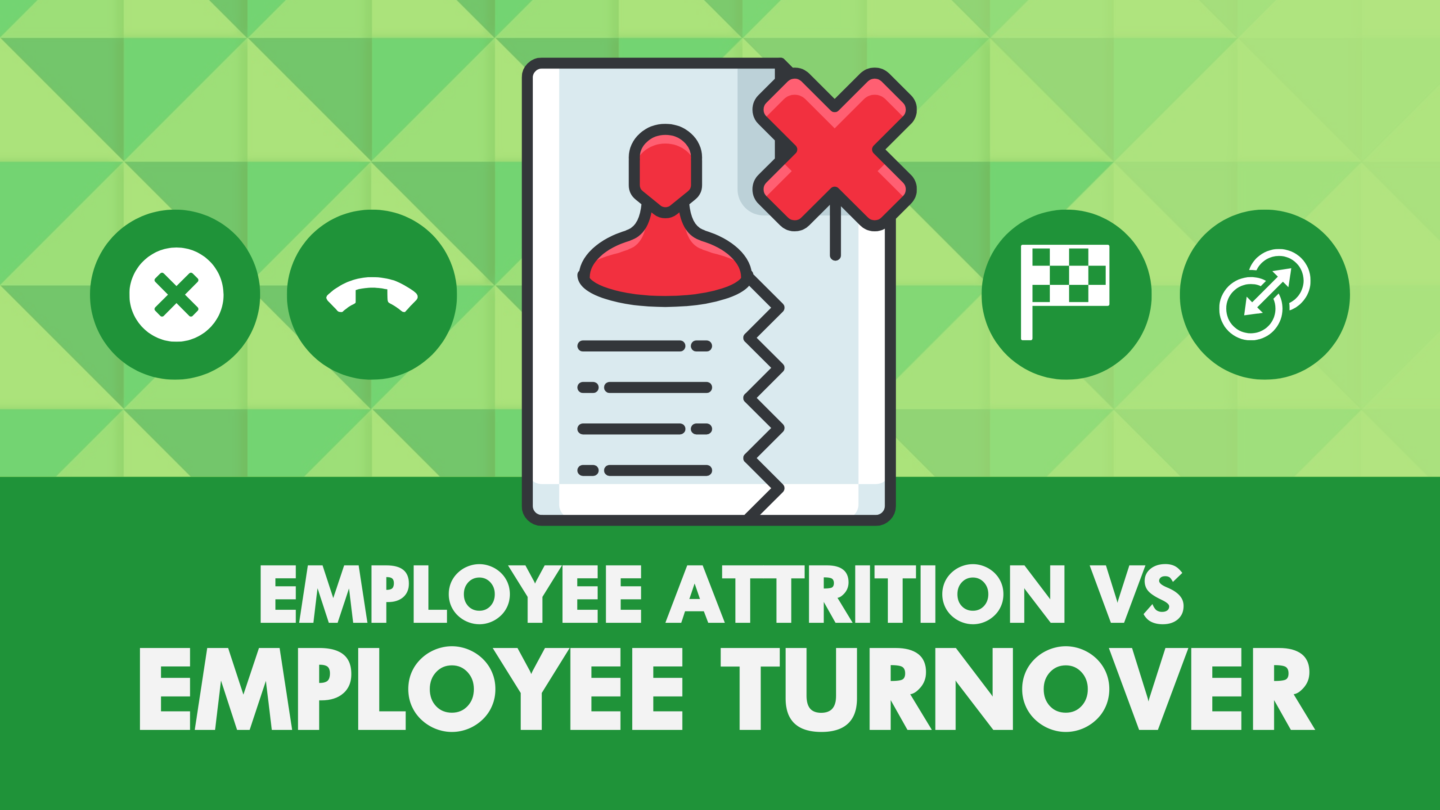
Employee Attrition vs. Employee Turnover
It is well known that a company or business is only as good as its employees. With solid hiring practices, effective collaboration, and an optimal workplace environment, employees may look to remain with their employer an extended time, and ideally provide value-add. However, very few employees will look to remain with an employer for life – eventually, there will come a time where their tenure at the job will end, either naturally, or involuntarily. This is referred to as Employee Attrition, or Employee Turnover, depending on the way the employee leaves the company.
While they are often used synonymously, there is a difference between employee attrition vs turnover – let’s take a look at the definitions:
Employee Attrition
The easiest way to think of employee attrition is the loss of an employee through a naturally occurring event/process. Some examples of this may include:
- Retirement
- Elimination of position
- Personal health reasons
- Employee passing away
Employee attrition is usually a much more amicable departure, as it is recognized that all things – including jobs – come to an end. One of the main differences between employee attrition vs turnover is that typically when attrition occurs, the vacancy is not filled by the company.
There are both pros and cons to employee attrition:
Pros:
- Reduced labor costs: For those companies facing financial distress, employee attrition can be a way to reduce costs quickly. By eliminating a position, they will not only reduce the headcount costs, but they won’t have any future expenses given the job vacancy will not be refilled. Also, the same would apply to an employee leaving a position of their own volition – if the job isn’t needed, a hiring freeze can be put in place to save money.
- More amicable departure: As mentioned above, an employee leaving for natural reasons is more likely to leave on good terms. While this may seem minor and obvious, it does have a more positive impact on office morale – an employee who leaves in a highly emotional state is more likely to leave other employees reflecting on what might have been an unfair or unjust exit for their colleague.
Cons:
- Reduced size of workforce: Exiting an employee – and not filling the vacancy – obviously means a smaller workforce. This could present problems when taking on tasks, and also translate to an increased workload volume for the remaining employees
- Potential to be costly: If attrition occurs for reasons of job elimination then the savings is planned and realized; however, if there is a sudden, unexpected event such as the death of an employee, cost and risk will present itself (e.g.; a high profile client who preferred dealing with this employee and now decides to leave).
Keeping all this in mind, what are the differences when we look at employee attrition vs turnover?

Employee Attrition vs Turnover
As mentioned above, one of the main differences between employee attrition and turnover is that, with the latter, the company usually must fill the vacancy. While turnover can be caused by similar reasons as attrition, turnover is usually viewed negatively. It can be voluntary (i.e. the employee resigns to find a better job) or involuntary (i.e. the employee is terminated as a part of managing poor performance).
Just like with employee attrition, employee turnover does have both pros and cons:
Pros:
- Potentially removing an employee who is problematic
- Opens the door to hiring new, better fits
Cons:
- If the vacancy isn’t quickly filled, heavier workload for remaining team members
- Costly to find replacement
- Constant effort needs to be directed towards training
- Loss of productivity with constant shuffling of team members
- A consistently high turnover rate could be indicative of a larger internal problem
As mentioned, employee turnover can be costly. A study estimates the cost of replacing an entry- or mid-level position can range from $7,000-$10,000, and a manager position can be in excess of $40,000. For 74% of companies rehiring after turnover, the losses averaged $14,900. If you’re hiring more than once per year for the same job opening, it will get very expensive very quickly.
Employee Attrition rate
One of the ways a business can keep an eye on employee attrition is to monitor the employee turnover rates. In 2017, the Bureau of Labor Statistics in the US found that the average turnover rate among professional and business services was 15.1%. While that rate varies by industry, other studies have set a good benchmark as 10%.
While Canada’s average turnover rate across the board was higher than the US’s – 16% vs 13% – the average turnover rate for Canadians in professional and business services came in lower, at 12.9%.
In order to calculate your employee attrition rate (also referred to as turnover rate), merely divide the number of employees who leave in a year by the number of positions you have available. This would include employees who leave due to:
- Resignation
- Retirement
- Laid off (due to downsizing)
- Terminated
If your company has a higher-than-average employee attrition rate, it may be due to some of the causes discussed below.
Causes of employee attrition and turnover
- Financial stress: Employees who are facing financial stress (i.e. not being able to save money, living paycheck to paycheck) are more likely to be on the lookout for a higher-paying job, which could lead to their resignation.
- Stagnancy: While some employees are content with the position they have, many others will be looking for professional development opportunities and therefore career advancement within a company. If that isn’t offered, they may also be seeking opportunities elsewhere.
- Inflexible workplace environment: If the employer isn’t interested in accommodating or attempting to promote work/life balance, professional growth opportunities, or neglects to address employee morale issues, the chance of increased turnover can be anticipated.
Final Thoughts
When comparing employee attrition vs turnover, it’s important to note that both can cost your company – how much depends on the factors involved with the employees leaving. Regardless, it’s in a company’s best interest to attempt to manage the amount of employee attrition and minimize turnover each year. A few good ways to do this include: implement Employee Opinion Surveys, perform (and act upon) on exit interviews; setting up financial wellness programs at work such as a Budgeting Program or look to improve upon existing benefits, discounts, perks, etc.
Monitor your business’s employee attrition rate, learn and adapt where and when required. Deeper insights can identify the source of issues and help to prioritize the programs that promote a high-performance culture while ensuring that retention rates remain stable.






